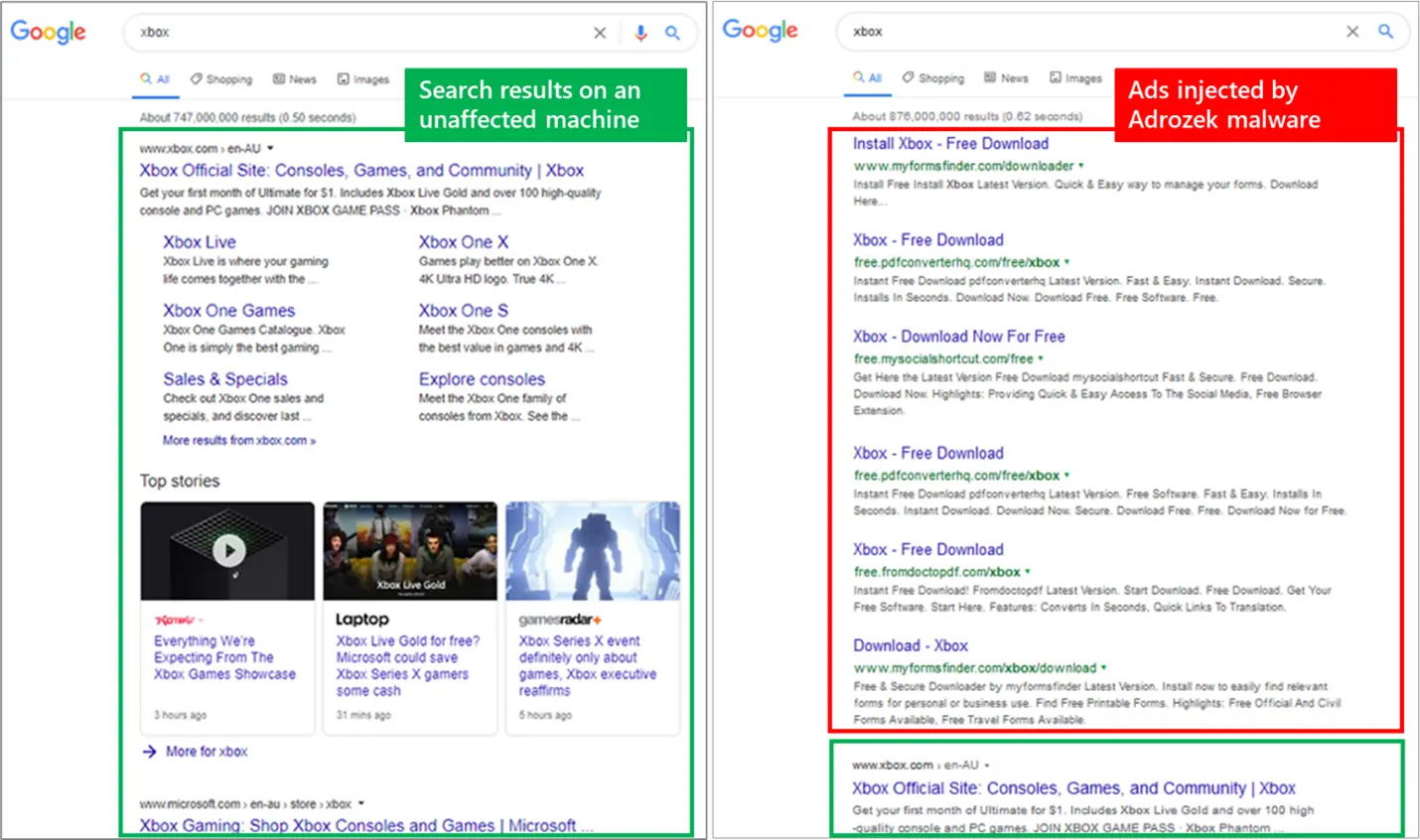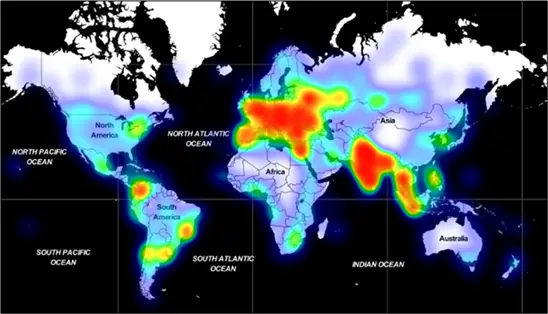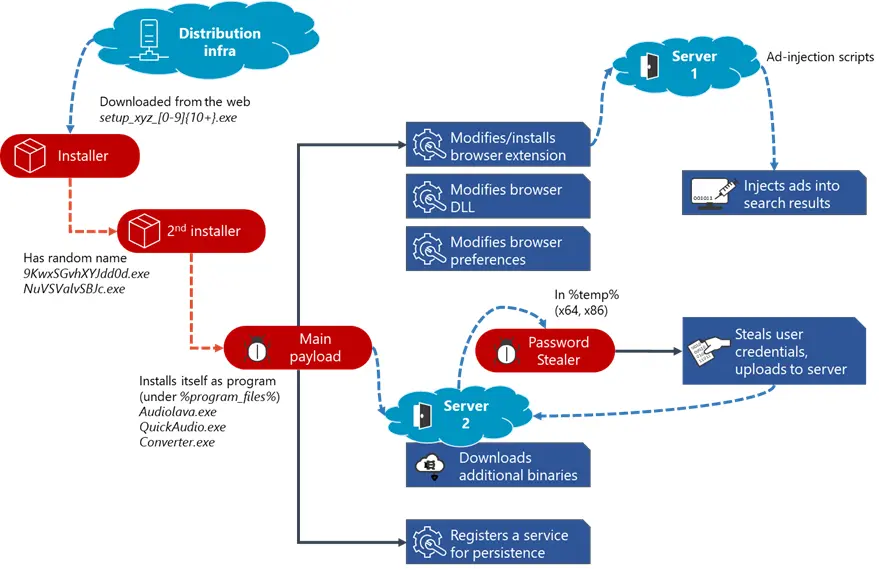KEEP IN TOUCH
Subscribe to our mailing list to get free tips on Data Protection and Cybersecurity updates weekly!







Microsoft has warned of an ongoing campaign pushing a new browser hijacking and credential-stealing malware dubbed Adrozek which, at its peak, was able to take over more than 30,000 devices every day.
On compromised computers, Adrozek injects ads into search engine results pages and it can hijack Microsoft Edge, Google Chrome, Yandex Browser, and Mozilla Firefox.
The malware uses malicious scripts downloaded from servers controlled by its operators to inject ads after altering the hijacked web browser’s settings and components.
“End users who find this threat on their devices are advised to re-install their browsers,” the Microsoft 365 Defender Research Team said.
“If not detected and blocked, Adrozek adds browser extensions, modifies a specific DLL per target browser, and changes browser settings to insert additional, unauthorized ads into web pages, often on top of legitimate ads from search engines.”

While Microsoft hasn’t yet found evidence of Adrozek being used to push malware onto its victims’ computers through the injected ads, this can happen at any time.
Also Read: Limiting Location Data Exposure: 8 Best Practices
The attackers can easily switch to infecting their targets with additional malicious payloads or to selling their access for malware delivery to other cybercrime gangs.
“The Adrozek attackers, however, operate the way other browser modifiers do, which is to earn through affiliate ad programs, which pay for referral traffic to certain websites,” Microsoft added.
“The intended effect is for users, searching for certain keywords, to inadvertently click on these malware-inserted ads, which lead to affiliated pages.
“The attackers earn through affiliate advertising programs, which pay by the amount of traffic referred to sponsored affiliated pages.”
In total, this ongoing campaign has so far used 159 domains to host “an average of 17,300 unique URLs” that delivered over 15,300 polymorphic malware samples to compromised devices leading to hundreds of thousands of samples being deployed on infected devices from May to September 2020.
Seeing that this massive campaign is still active and spreading to new computers each day, Adrozek’s infrastructure is still expanding and adding new host domains used to inject new and unique malware payloads.
“The distribution infrastructure is also very dynamic. Some of the domains were up for just one day, while others were active for longer, up to 120 days,” Microsoft said.
“Interestingly, we saw some of the domains distributing clean files like Process Explorer, likely an attempt by the attackers to improve the reputation of their domains and URLs, and evade network-based protections.”

Between May and September 2020, the attackers behind the Adrozek malware campaign have infected their targets via drive-by downloads when they landed on one of the 159 domains used to push hundreds of thousands of Adrozek samples.
Being a polymorphic malware strain, Adrozek will also evade detection and it also makes it easy for its operators to deploy huge volumes of new samples to their delivery infrastructure.
“While many of the domains hosted tens of thousands of URLs, a few had more than 100,000 unique URLs, with one hosting almost 250,000,” Microsoft added.
“This massive infrastructure reflects how determined the attackers are to keep this campaign operational.”
The victims are served a heavily obfuscated malicious executable that gets saved in the computer’s %temp% folder, a binary that later drops and installs the main payload camouflaged as a legitimate audio software into Program Files.

After being installed on the device, Adrozek will start adding the malicious scripts it uses to inject ads to several extensions targeted for each of the browsers it hijacks.
Also Read: 10 Practical Benefits of Managed IT Services
The malware will turn off security controls on Microsoft Edge and other Chromium-based web browsers, turns off safe browsing, and enables the hijacked extensions in incognito mode.
It will also disable automatic browser updates on infected computers to make sure that the hijacked browser components are not restored to a clean version.
Adrozek gains persistence by adding registry entries and creating a new Windows Service named “Main Service” to have the main malware payload launched automatically on system startup.
On systems where Mozilla Firefox is installed, Adrozek will also steal encrypted user credentials from the victims’ Firefox profile, credentials that it will later decrypt send to its operators.
“With this additional function, Adrozek sets itself apart from other browser modifiers and demonstrates that there’s no such thing as low-priority or non-urgent threats,” Microsoft concluded.
“And while the malware’s main goal is to inject ads and refer traffic to certain websites, the attack chain involves sophisticated behavior that allow attackers to gain a strong foothold on a device.”